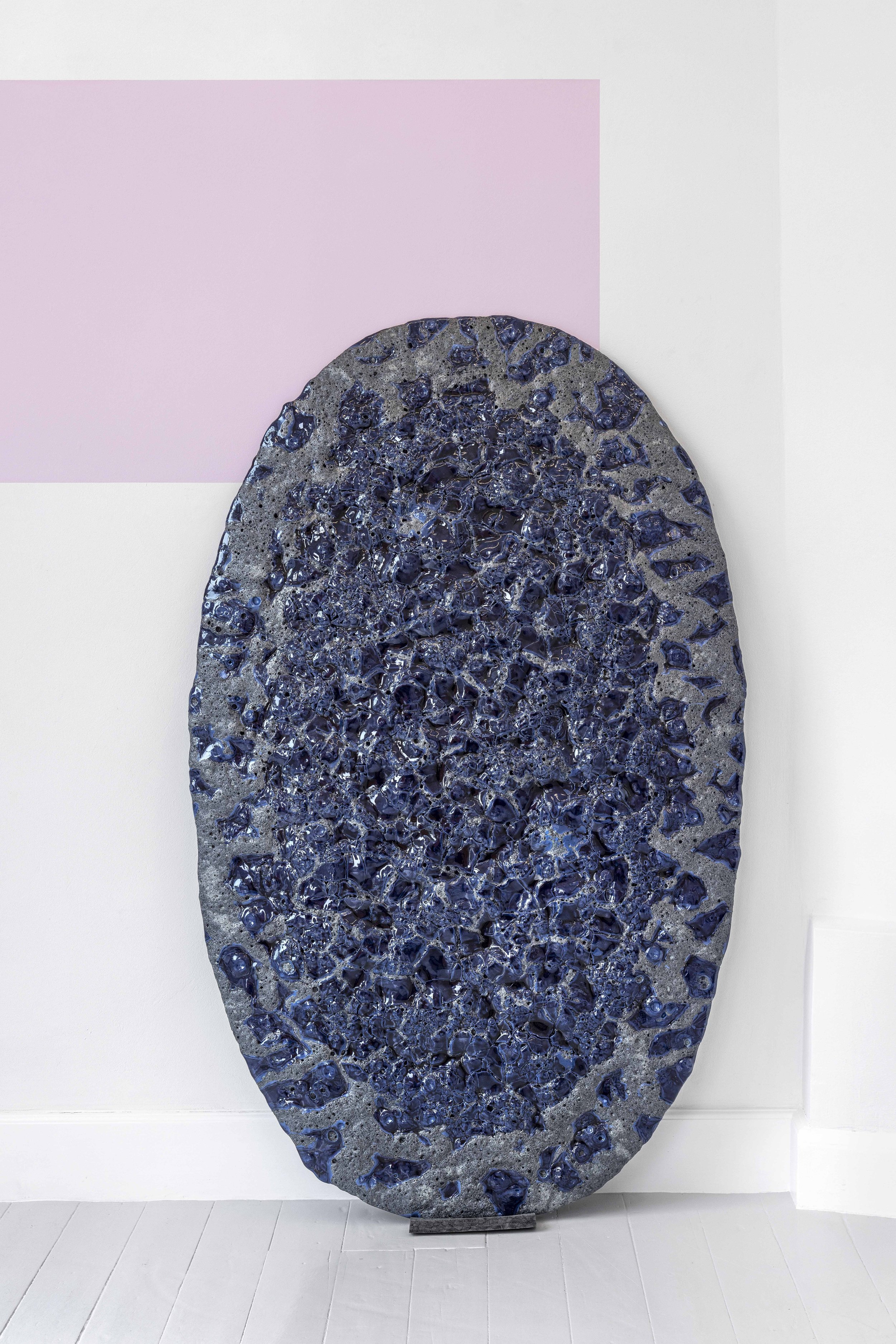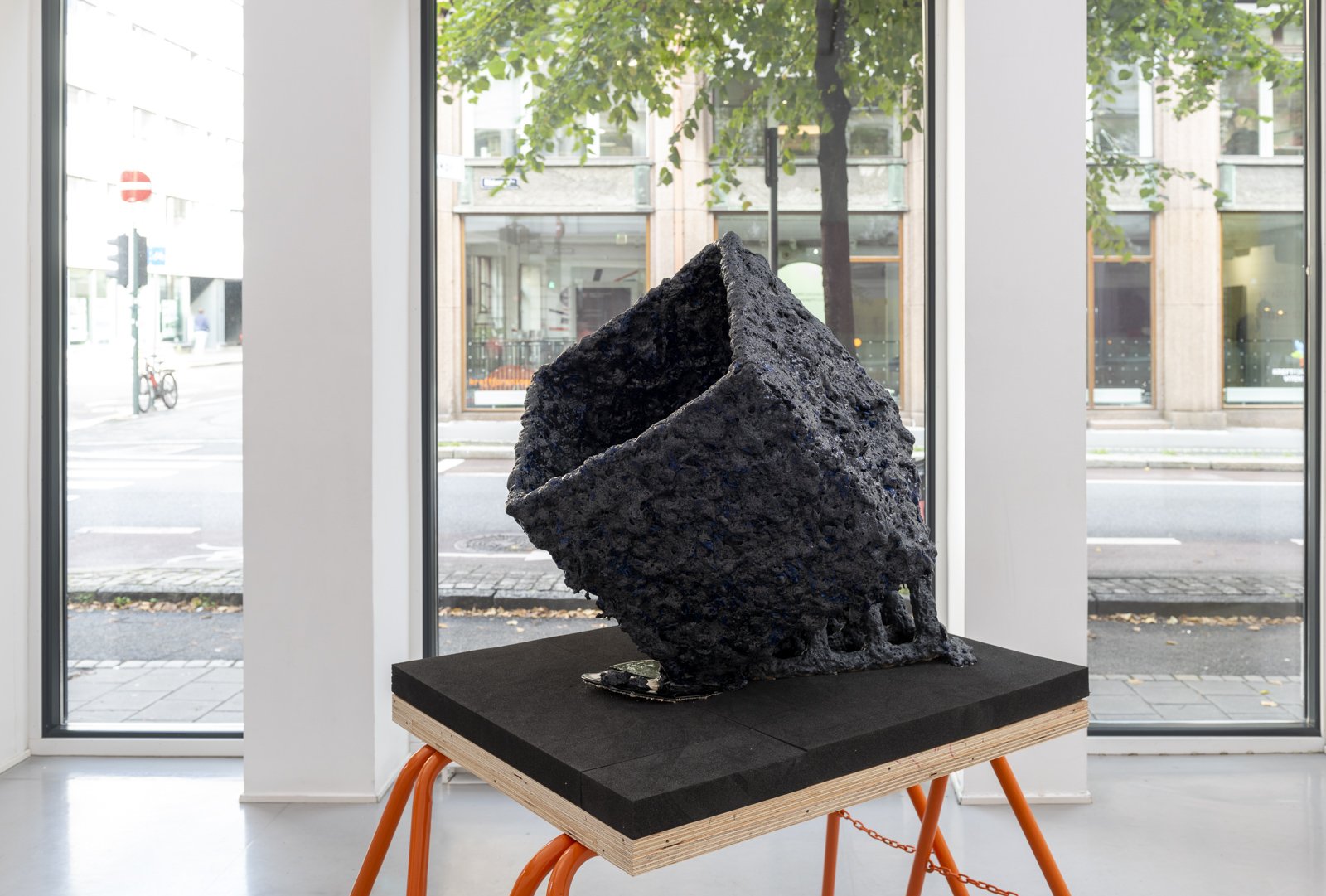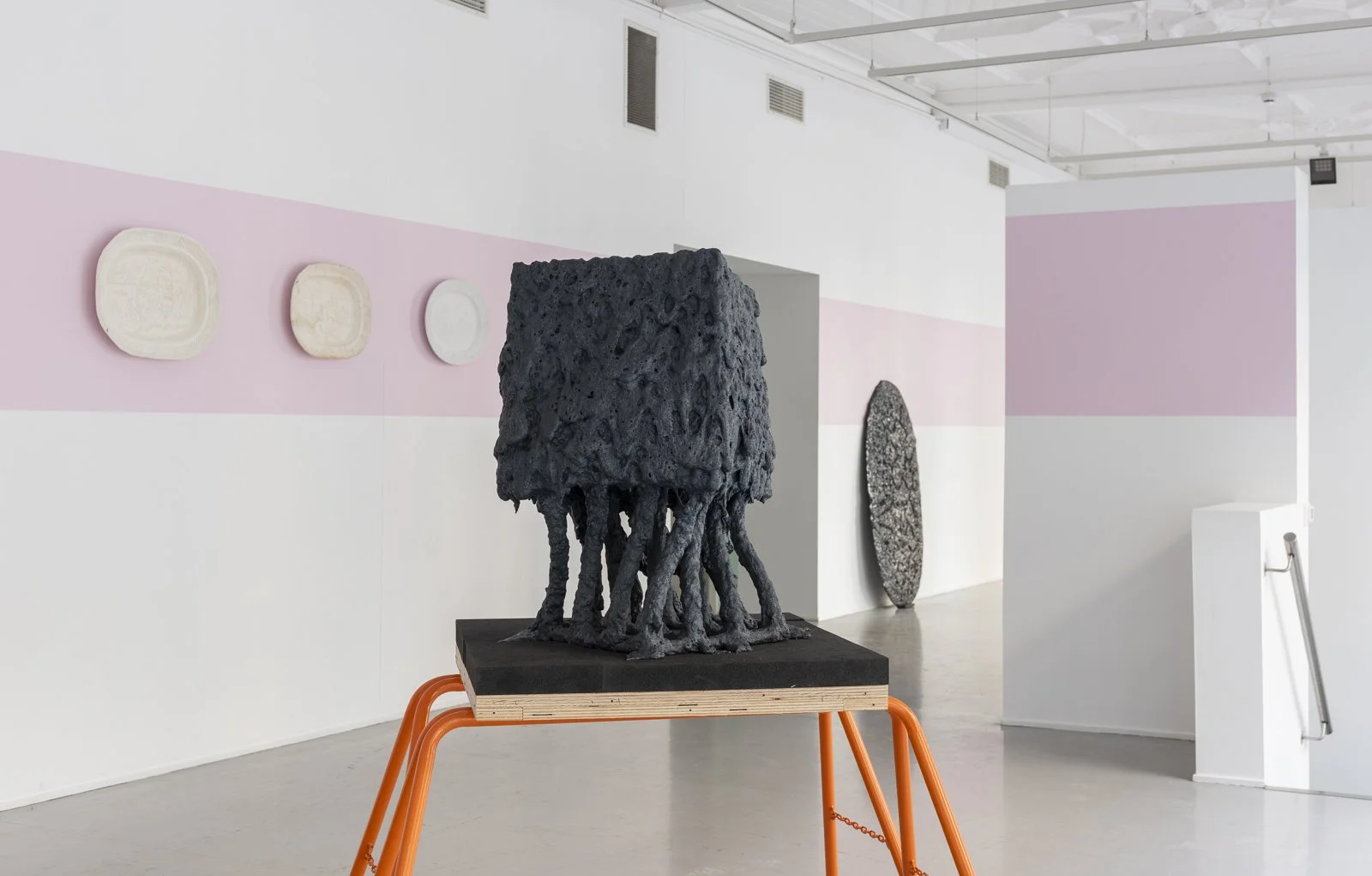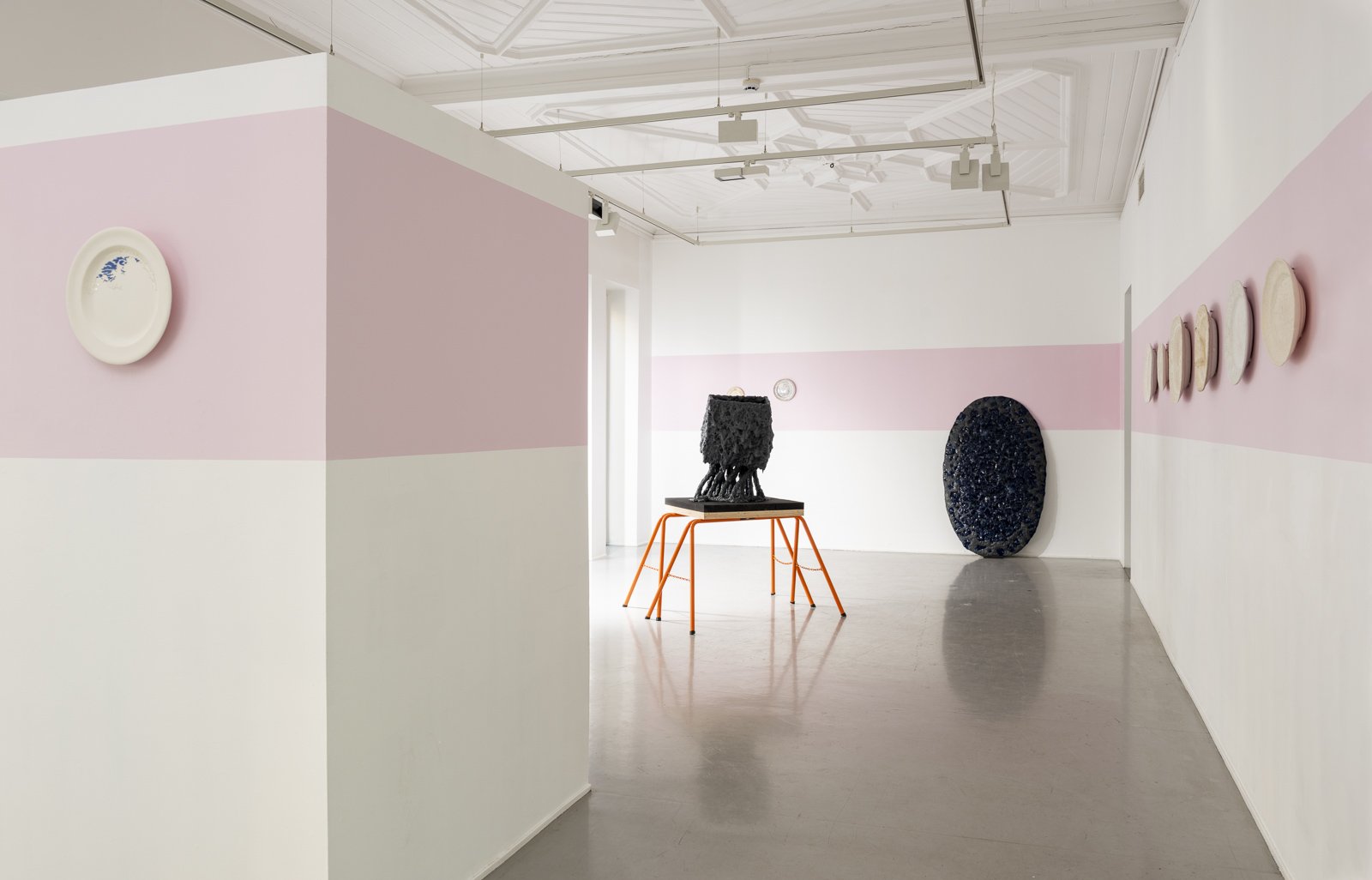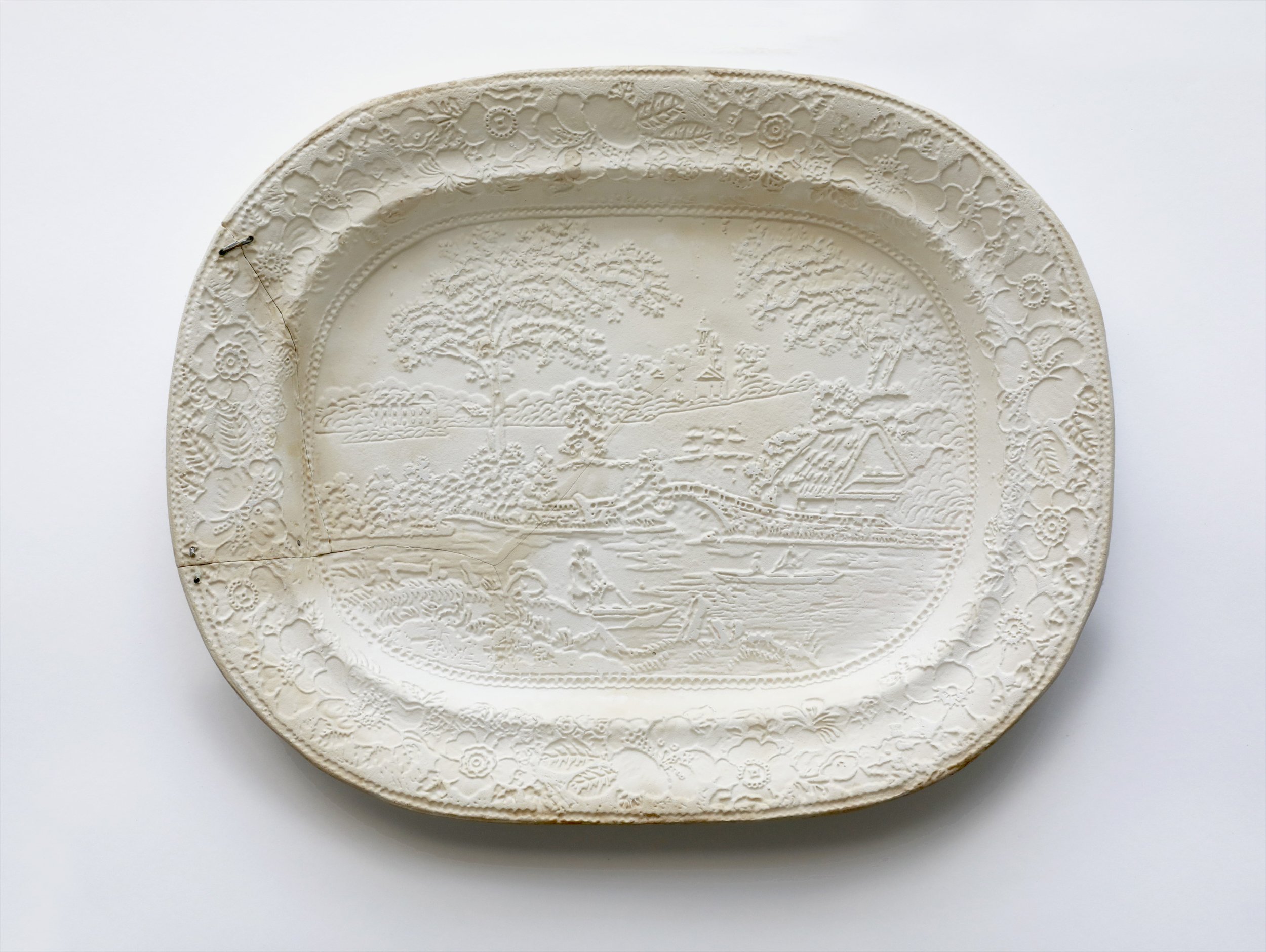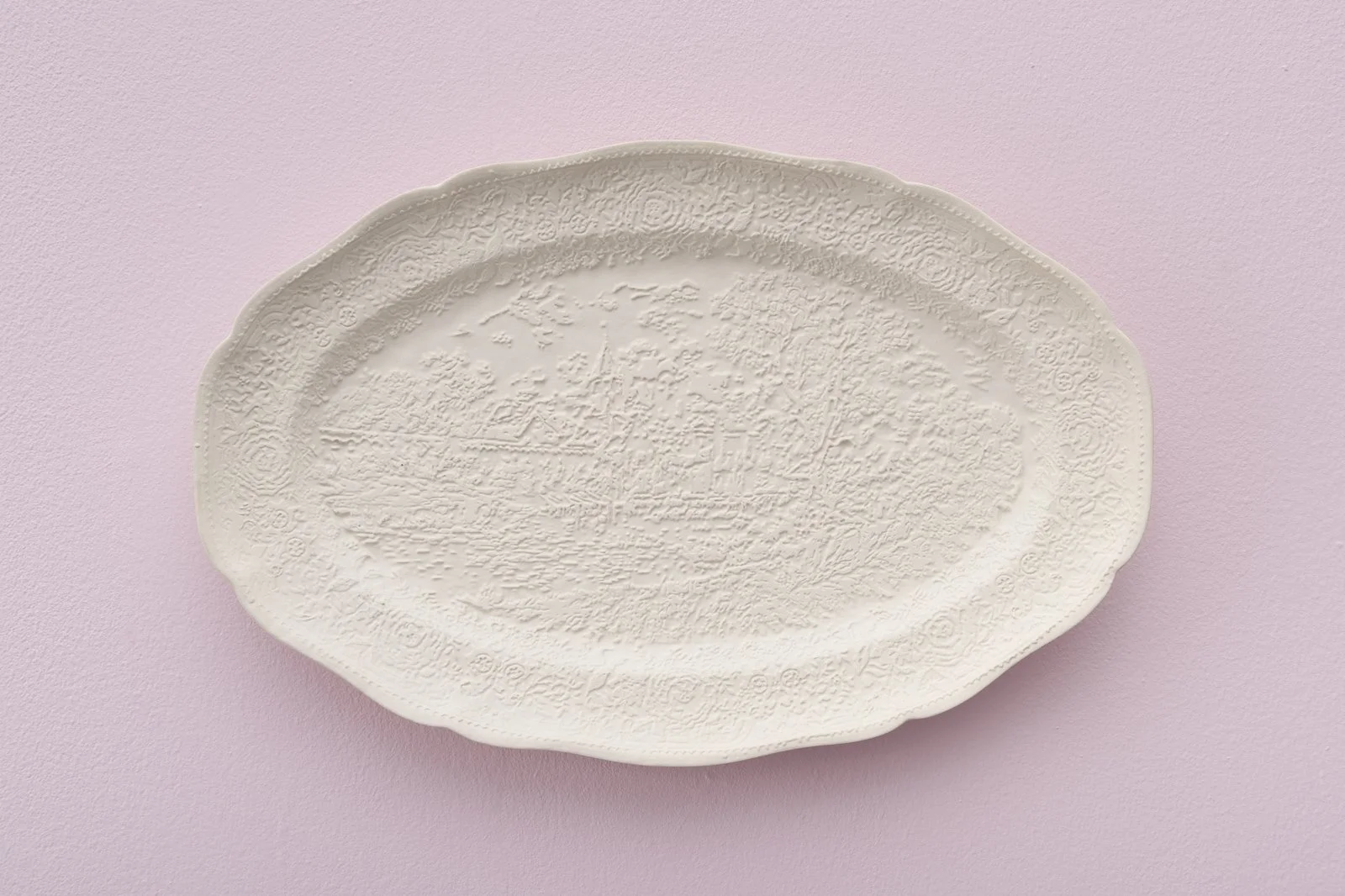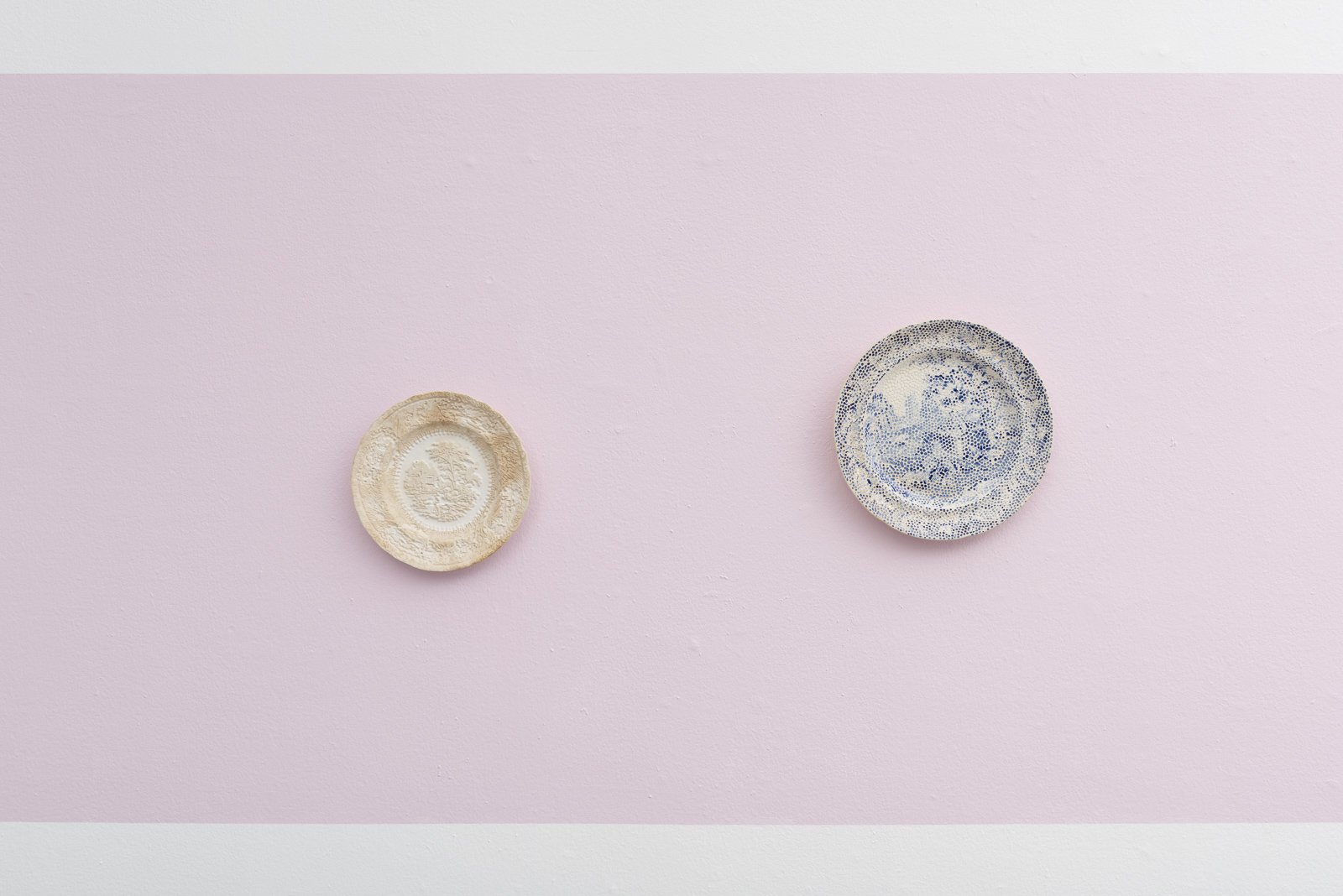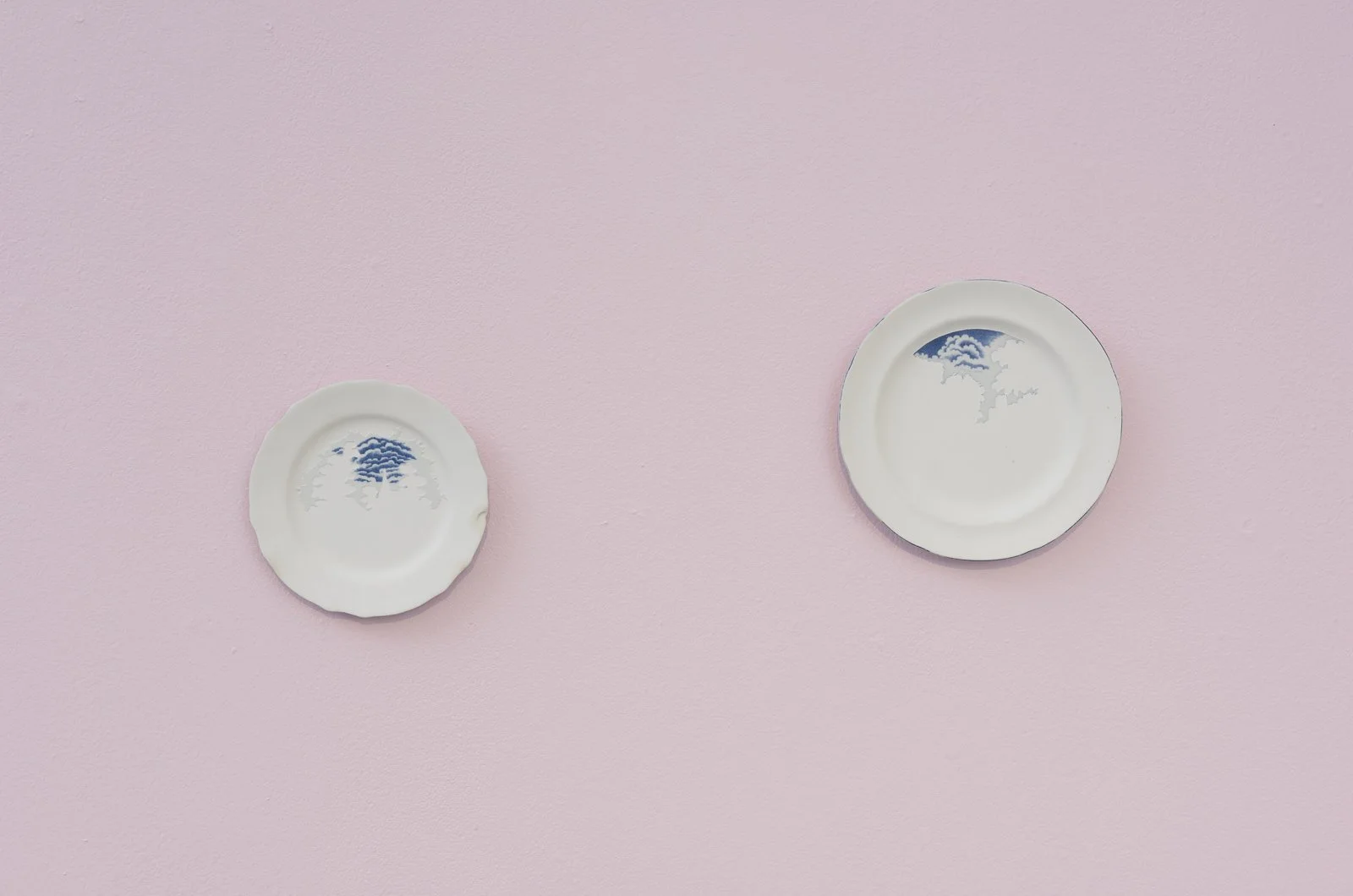Caroline Slotte & Gitte Jungersen
There is Constantly Something Happening
28 September - 5 November 2023
Ceramics can be transformed in a split second if accidentally dropped and shattered. Or it can be slowly worn down – touched by hands, scratched by cutlery, its surface eroded by wind and weather. From the moment of creation, any ceramic object is also an incipient ruin, since just as there is a ‘before’, there will also be an ‘after’. Over time, the objects are going to break up completely and enter into new physical manifestations.
Caroline Slotte’s works begin with ready-made ceramic items. She sandblasts, grinds and cuts her way into the material, bringing new poetic images out of the familiar utilitarian objects. In her series Tracing, it is as if a miniature sandstorm has swept across the original piece, removing layer after layer of material. A landscape painted in cobalt blue, a sky, a cloud, a tiny person – the image is slowly reduced to white dust on the workshop floor. The printed imagery gradually transforms into something akin to an imprint or an X-ray, as if a memory of the image had sunk into the plate and is now emerging as a three-dimensional recollection. In the series Under Blue Skies, all that remain are a few blue clouds. The clouds, originally added as background at the periphery of the central image, now move to the foreground, accompanied by the outlines of the removed elements – a church, a tree, a floral border. The eroded motifs appearing as negative forms in the white porcelain body.
Creation and destruction seem in Gittes Jungersen’s works like two extremes that are closely connected. Ceramics come into being as vitrified materiality when different raw minerals fuse and transform as a result of the dramatic, destructive and disintegrating forces of the firing. This transformation is in Jungersen’s works retained as a frozen moment of a dynamic dimension that is felt like a quivering undertone in the finished work. Piece #2 and Piece #3 consist entirely of thick layers of different glazes. During the firing the glazes melt, boil and bubble, until a sudden reduction in the temperature freezes the chemical reaction. Conventionally, the glaze, even in large sculptures, is merely a thin layer, whereas here, it takes on a format mirroring the human body. - Like a blown up detail, allowing a glimpse into matter itself in a state of vibrating transformation. In Ruin #1 and Ruin #3 the loss of control that the firing always represents in the ceramic process is taken to a maximum. Jungersen has pushed the forms and glazes to the edge of what is possible, building too tall and spindly, too big and thin, firing at too high a temperature, causing the objects to deform and come close to collapse. The massive layers of glaze create an expression reminiscent of geological processes, and gives the impression that the objects occupy a position in between the raw powers of nature and man-made cultural objects.
Caroline Slotte (b. 1975 in Helsinki) graduated from Design School Kolding in 1998 (BA) and from Bergen Academy of Art and Design (now KMD – UiB) in 2003 (MA). In addition Slotte holds a PhD in artistic research from Bergen Academy of Art and Design (2007–11). From 2017 to 2022, Slotte was Professor of Ceramic Art at Oslo National Academy of the Arts. Selected exhibitions include: Life Cycles, Museum of Modern Art, New York, 2023; There is constantly something happening, Peach Corner, Copenhagen, 2023; Ceramics Facing the New, Espoo Museum of Modern Art, 2021; Broken Nature, Museum of Modern Art, New York, 2020; Riska & Slotte, Gallery Format, Oslo, 2018; Revive, Remix, Respond, The Frick Pittsburgh, 2018; Visioning Future: Cheongju Craft Biennale, 2017; PAGES, Konsthantverkarna, Stockholm, 2016; My Blue China!, Bernardaud Foundation, Limoges, 2015; Zwinger und Ich, Bomuldsfabrikken Kunsthall, Arendal, 2015; Solo, Kunstnerforbundet, Oslo, 2014; Tenderness, Galleri F15, Moss, 2013; New Blue-and-White, Museum of Fine Arts, Boston, 2013; Making Knowledge, Gustavsbergs Konsthall, Stockholm, 2012; Thing Tang Trash, KODE, Bergen, 2011. Slottes works have been aquired by (among others): Museum of Modern Art, New York (US), Museum of Arts and Design, New York (US), Victoria and Albert Museum, London (UK), Musée Ariana, Geneva (CH), National Museum of Scotland (UK), Nasjonalmuseum, Oslo (NO), KODE Art Museums, Bergen (NO), Nationalmuseum, Stockholm (SE), Röhsska Museum, Gothenburg (SE), Design Museum, Helsinki (FI)
Gitte Jungersen (b. 1967 in Århus) graduated from the Danish Design School (now the Royal Danish Academy) in 1993. In addition to her artistic practice, Jungersen is a frequent guest teacher, lecturer and examinator at university level in the Scandinavian countries. Selected exhibitions include: There is constantly something happening, Peach Corner, Copenhagen, 2023; RUIN, solo exhibition at Officinet, Copenhagen, 2022; Bend, Bubble and Shine, Hostler Burrows NY and Los Angeles, 2021; Ceramic Works, A. Petersen, Copenhagen 2019; Crafted Matter, Cheongju Crafts Biennale, Korea, 2019; Ceramic Momentum, CLAY Museum of Ceramic Art Denmark, Middelfart, 2019; People Who Pot, MDR Gallery, London, 2019; Mindcraft 18, San Simpliciano, Milan, 2018; Tilstedet, solo exhibition in Bagsværd Church, 2017; Ultimate Impact, the Round Tower, Copenhagen, 2017; Glaze – Chemistry, Mass and Myth, Sophienholm, Lyngby, 2017; Fireworks, Gustavsbergs Konsthall, Stockholm, 2016; Zwinger und Ich, Bomuldsfabriken Kunsthal, Norge, 2015; Setting the Stage, Copenhagen Ceramics, 2012; Thing Tang Trash, KODE Art Museums, Bergen, 2011. Jungersens works have been aquired by (among others): Musee Ariana, Geneva (CH), Nordenfjeldske (NO), Public Art Agency Sweden, Stockholm (S), Nationalmuseet, Stockholm (S), KODE Art Museums Bergen (NO), Danish Arts Foundation (DK), McManus Galleries, Scotland (UK), CLAY Museum of Ceramic Art Denmark (DK), Designmuseum Danmark (DK), New Carlsberg Foundation. Awards and grants: Danmarks Nationalbank’s Anniversary Foundation’s appreciation grant 2020, Ole Haslunds Hæderslegat 2008, Danish Arts Foundation’s three-years working grant 2000.

